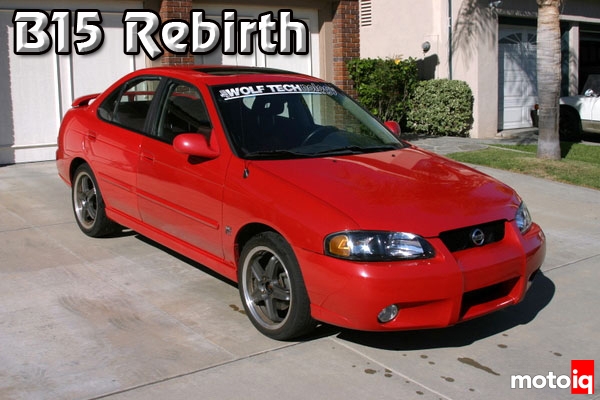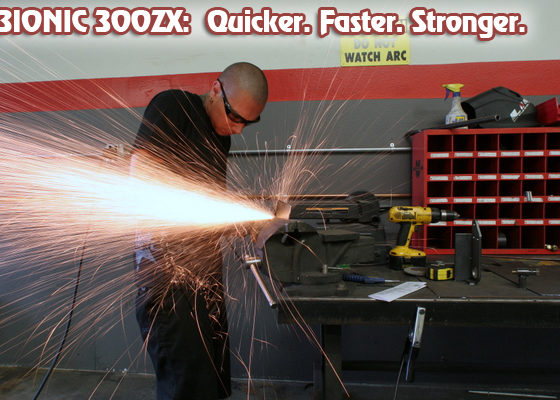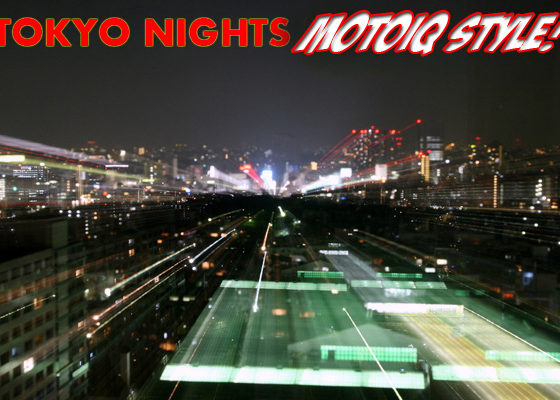,
The main tubes of the cage were backed up to the floor by generous plates of .125” thick steel. Ritchie did complex compound bends of the floor plates to tie them completely into the floor and the surrounding frame rails. Sometimes boxed plates were built to integrate the tube foot fully into the frame rails for a huge measure of strength. The forward legs of the cage were attached to the side frame rails as far forward as possible, the main hoop was placed as far rearward as possible away from the drivers while tying the mounting points of the rear suspension trailing arms into the structure with the rear downward legs mounting to the top of the shock towers. Tubes also pierced the firewall and tied the front chock towers into the main structure of the cage, completely joining the car together in a semi tube frame structure. More tubes will be added later but this is the basic backbone of the car.
 |  |
| Richie Watanabe is quite a craftsman drawing from years of experience building cages for rally road racing and drifting. Of all the cages he has built that have been subjected to crashes, no driver has ever failed to walk away from a wreck, something he prides himself with. | We used an uninterrupted X brace for the bases of our door support structure. The X juncture is covered with a gusset to spread impact loads. The vertical strut is an innovation taken from WRC cars to resist “A” pillar crush down in a severe rollover. |
 |  |
| Our door bar from the outside. The X will act as the final barrier between the driver and the outside world. We will be adding a crush structure to this that will extend into the door to help attenuate a severe side impact. | Our cage starts to come together. We are looking more like a race car every day. |
 |
| To run a proper caster camber plate we cut the tops off of the shock towers and welded in Ground Controls kit to utilize one of their camber/caster plates. |
For the most part Richie used MIG welding. MIG welding is a semi automated welding process where the welding electrode wire is consumable and forms the weld puddle as it’s automatically fed. An inert gas is disbursed while welding which forms a shield over the puddle of melted metal preventing air contact induced oxidation that can weaken the joint. For harder to reach areas Richie used TIG welding. TIG welding uses an electrical torch to melt the metal and filler metal is hand fed in. TIG welding requires more skill but it gives the welder more control over his work. A TIG torch can be smaller than a MIG weld head so it can be worked in tighter spots.
 |
| Holes in the firewall were patched with pieces of light gauge steel. |
While tubes were being welded to the shock towers, Richie also addressed another problem of the Spec-V. The tops of the shock towers have a small center hole and an odd domed shape. This makes the use of camber plates to make the camber and caster adjustable impossible. Ground Control came to our rescue to solve this problem. They make a kit for the Spec-V that was developed for Dave Coleman’s rally car that consists of a flat laser cut steel plate that takes a universal Ground Control camber/caster plate. This replaces the top of the stock shock towers. Richie cut the stock tower tops off and careful welded the ground control bits in place. This is a lot of work but it is absolutely critical to adjust the camber and caster on a race car and the Ground Control plates allow adjustment to be made quickly in the pits from one location. When test time is short, ease and speed of adjustment becomes the difference between winning and loosing. Richie went a step further and blended the plates into the top of the towers with an extra reinforcing band that backs up the upper welds. To this band he attached the three tubes that come from the main tubes of the cage to triangulate the shock tower top to the main structure. This is light, stiff and strong.



